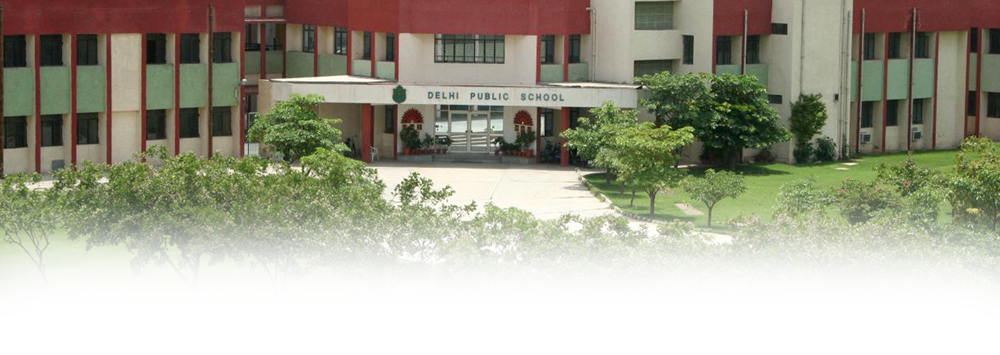VI to VIII Curriculum
Curriculum Middle School
Classes VI-VIII
The school strictly follows the curriculum and the guidelines of CBSE & NCERT at middle school level with a primary aim to prepare the students with the 21st century skills. To equip the young ones with the cognitive and linguistic competencies, we follow Five Step Learning Process i.e. Introduction, Conceptual Understanding, Practice, Application and Expansion. The curriculum aims at fostering creativity, critical thinking, problem solving and collaboration skills in the students. It is ensured that physical, emotional, intellectual, spiritual and development of life skills seeps into the domains of a child’s development.
The atmosphere of the classrooms is very congenial and interactive with a child centric approach. Due emphasis is given on the scholastic needs of the students with an equal importance of practical learning and developing soft skills.
Curriculum Goals Of Languages
Children are expected to:
* acquire the ability to listen and respond orally and in writing.
* speak about self, simple experiences; report events to peers, accurately and appropriately.
* make connections and draw inferences.
* recite poems, dialogues; speak and write language chunks (phrases, sentences from stories, plays,
speeches, etc.)
* understand the central idea and locate details in the text (familiar and unfamiliar).
* use their critical/thinking faculty to read between the lines and go beyond the text.
* comprehend and use the form and functions of grammar in context.
* write coherently and with a sense of audience (formal and informal).
* write simple messages, invitations, short paragraphs, letter (formal and informal), applications,
personal diary, dialogue from story and story from a dialogue/conversation.
* engage in creative writing e.g. composition of poems, jokes, short stories, etc.
* develop sensitivity towards their culture and heritage, aspects of contemporary life, gender, and
social inequality
Curriculum Goals Of Mathematics
Children are expected to:
* move from concrete ideas of numbers to number sense.
* sees relationships between numbers and looks for patterns in relationship.
* understand and apply concept related to variables, expressions, equations, identities, etc.
* use arithmetic and algebra to solve real life problems.
* develop aesthetic sense by discovering symmetries in shapes like triangles, circles and
quadrilaterals.
* identify space as region enclosed within boundaries of a shape.
* develop spatial understandings in terms of perimeter, area and volume and use them to solve day
to-day life problems
* learn to provide reasoning and convincing arguments to justify their own conclusions in mathematical
context.
* collect, represent (graphically and in tables) and interpret data/information from their life
experiences.
Curriculum Goals Of Science
Children are expected to develop:
* scientific temper and scientific thinking.
* understanding about the nature of scientific knowledge, i.e., testable, unified, developmental and
creative.
* process skills of science which includes observation(s), posing question(s), searching various
resources of learning, planning investigations, hypothesis formulation and testing.
* appreciation for historical aspects of evolution of science.
* sensitivity towards environmental concerns.
* respect for human dignity and rights, gender equity, values of honesty, integrity, cooperation and
concern for life.
The curriculum has been organised around the following themes that are cross disciplinary in nature:
* Food
* Materials
* The World of the Living
* Moving Things, People and Ideas
* How Things Work
* Natural Phenomena
* Natural Resources
Curriculum Goals Of Social Science
Children are expected to:
* recognize ways in which political, social and economic issues which affect their daily lives across
time and space.
* understand about the earth as the habitat of humans and other forms of life.
* become familiar with one’s own region and realise interdependence of various regions (local to
global).
* understand spatial distribution of resources and their conservation.
* understand historical developments in different periods of Indian history.
* comprehend how historians study the past using different types of sources.
* understand historical diversity to relate developments of one place/region with those of another.
* imbibe the values of the Indian Constitution and their significance in everyday life.
* gain a sense of the working of Indian democracy, its institutions and processes at the local, state
and union levels.
* become familiar with socio-economic role of institutions such as family, market and government.
* recognize the contributions of different sections of society to political, social, cultural, and
environmental processes.
Students will be assessed in Scholastic and Co-scholastic areas as per the following scheme:
Result Computation
|
Term |
Type of Assessment |
Weightage |
|
Term 1 |
Multiple Assessment 1 |
5 |
|
Subject Enrichment Activities 1 |
||
|
Notebook 1 |
||
|
Weekly Test 1 |
5 |
|
|
Multiple Assessment 2 |
5 |
|
|
Subject Enrichment Activities 2 |
||
|
Notebook 2 |
||
|
Weekly Test 2 |
5 |
|
|
Half Yearly Examination |
80 |
|
|
Term 2 |
Multiple Assessment 3 |
5 |
|
Subject Enrichment Activities 3 |
||
|
Notebook 3 |
||
|
Weekly Test 3 |
5 |
|
|
Multiple Assessment 4 |
5 |
|
|
Subject Enrichment Activities 4 |
||
|
Notebook 4 |
||
|
Weekly Test 4 |
5 |
|
|
Annual Examination |
80 |
|
|
Cumulative Result: |
||


